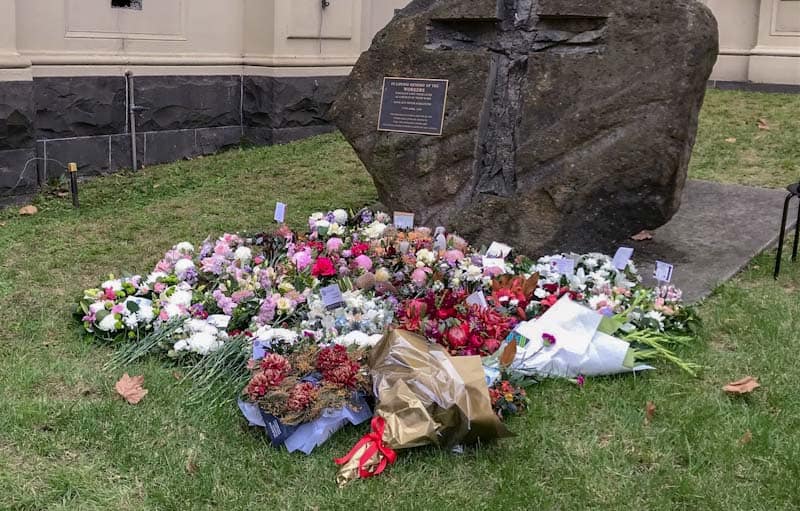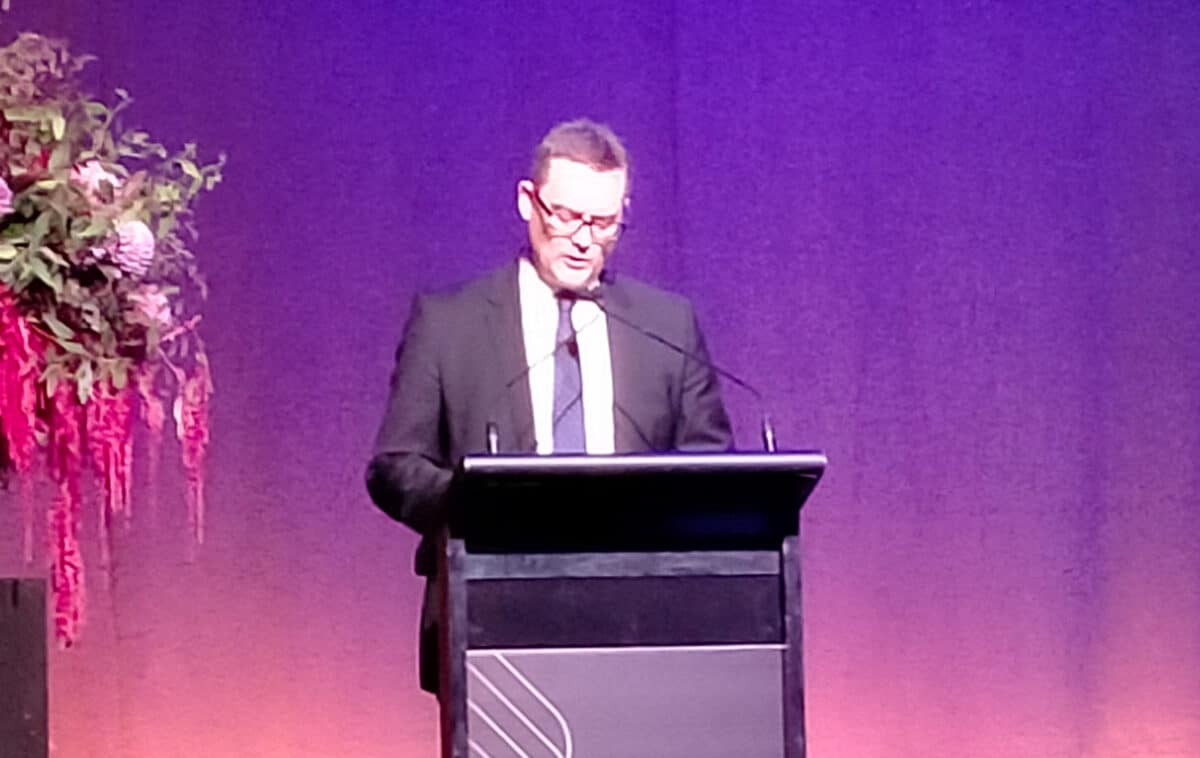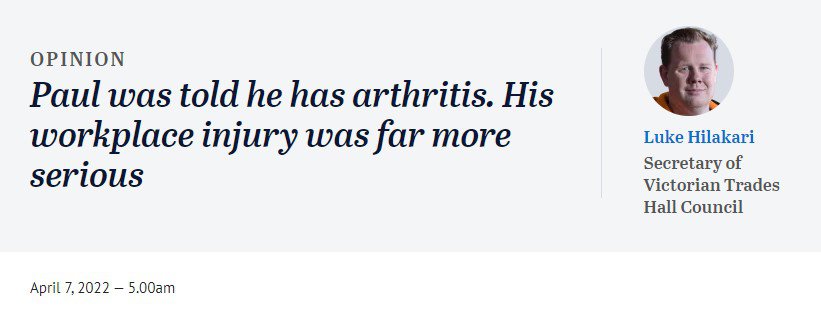Last week a Victorian politician and a senior bureaucrat spoke about occupational health and safety (OHS) at the Worksafe Victoria awards night. On April 28, 2022, the same bureaucrat and a couple of other politicians spoke at the International Workers Memorial at Trades Hall in Melbourne. Did they say anything useful? Did they say anything that changes or progresses OHS? And who was the audience?
Category: law
OHS record restated, but employers omitted
The WorkSafe Awards night for 2021 was postponed a couple of times from its traditional date in Workplace Health and Safety Month, October. The April 21, 2022, event held the potential for a political statement, given that 2022 is an election year for Victoria, and the event was held one week before International Workers Memorial Day. No such luck. We may have to wait for October 2022, a month before the November election.
The Minister for Workplace Safety, Ingrid Stitt, could not attend, but Bronwyn Halfpenny, the Parliamentary Secretary for Workplace Safety, did. Halfpenny is very active in occupational health and safety (OHS) and the government’s working group of bereaved families, but her speech at the awards event reiterated the government’s OHS reforms. Like other members of the government, she gives a great deal of significance to Industrial Manslaughter changes. These changes have generated fear at senior management levels but little difference in employers’ commitment to improving workplace safety and health. A big stick is pointless unless it is used and used as intended.
Industrial Manslaughter, psychologically safe workplaces and insecure work – just another day in the Senate
Australia has entered a federal election campaign, but the mechanics of the Australian parliament continued, and various occupational health and safety (OHS) comments were voiced in Senate Estimates. These comments touched on Industrial Manslaughter, regulations on psychologically safe workplaces and insecure work.
Should heartlessness be the status quo?
On April 7, 2022, prominent trade unionist Luke Hilakari had an opinion piece published in The Age newspaper titled “Paul was told he has arthritis. His workplace injury was far more serious”. Hilakari told a story, familiar to many, of one man’s journey from workplace injury to impecunious hardship.
The story is tough to read and full of injustices, but the political point of the article is lost. The Victorian Government has been provided with a report that could reduce the bureaucratic and surveillance challenges faced by Paul, but the system itself will not change.
Nobody hates ‘”reasonably practicable” – we tolerate it
Do unions want employers to hold an absolute duty of care for work health and safety? Do unions hate the concept “as far as is reasonably practicable”?
The last Australian jurisdiction to hold employers to an absolute duty of care was New South Wales. That position was eroded by the harmonisation process and NSW OHS laws moving to the Work Health and Safety regime. An absolute duty of care, in the SafetyAtWorkBlog dictionary, is that the employer is responsible for any injuries occurring at work.
Why don’t we act on the evidence?
Several years ago, I worked for an organisation that handed out awards for exceptional efforts and achievements. One time the award was given to a worker who had worked in the office for most of the weekend to meet a semi-important deadline. I was horrified as that worker had sacrificed important “downtime” with family friends and his own welfare with no time in lieu. But he was lauded by the boss.
Rewarding those who sacrifice their own health and safety for the apparent good of the company must change as there is increasing evidence that working long hours increases serious health risks. An extensive research project for the World Health Organisation has found:
No fanfare for Victoria’s workers’ compensation review
This week the Victorian Government released Peter Rozen‘s report called Improving the experience of injured workers: A review of WorkSafe Victoria’s management of complex workers’ compensation claims. The public release has been long anticipated as it has been sitting with the Minister for Workplace Safety, Ingrid Stitt, since April 2021.
The Review was forced on the Government after the second damning report on WorkSafe Victoria’s performance from Victorian Ombudsman Deborah Glass. In some ways, Rozen’s report can be seen as the third report into the Victorian workers’ compensation scheme.







